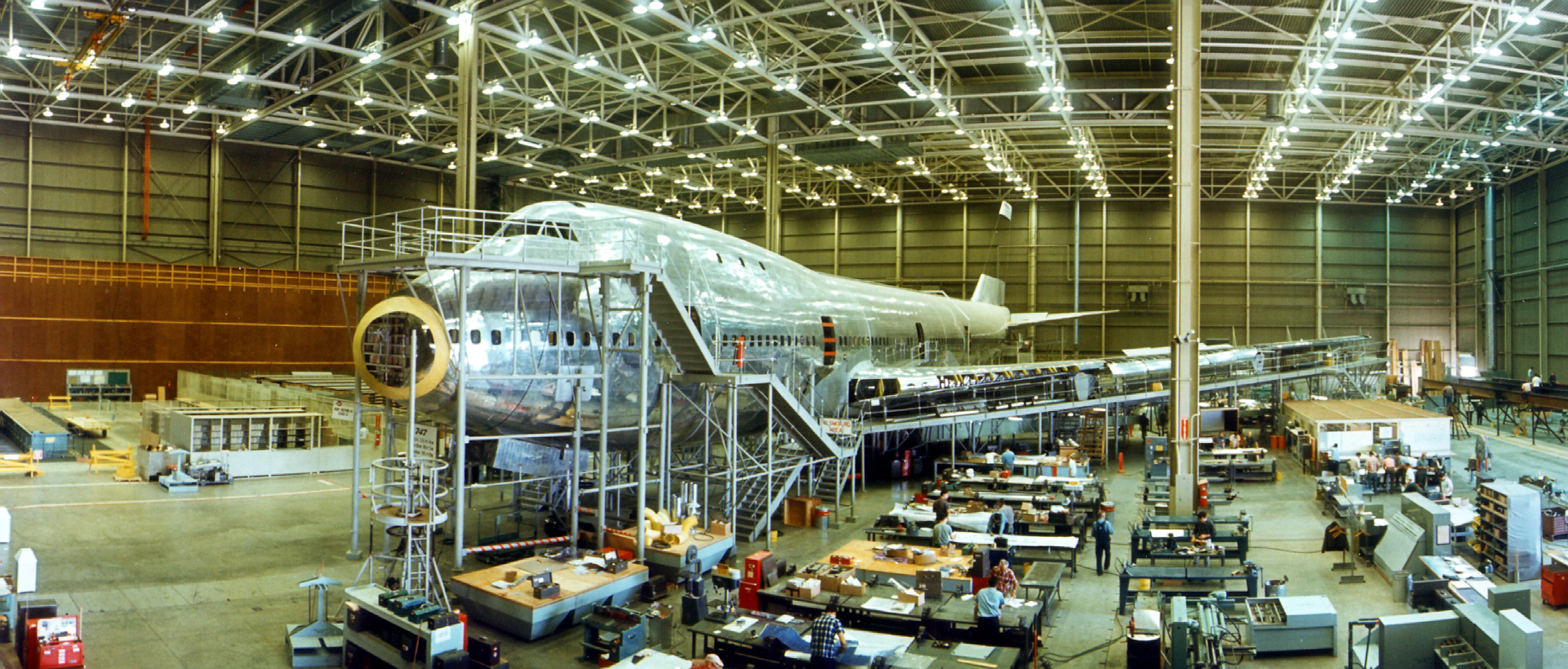Project Overview
Services Provided
- Design-Build.
- Development and Financing.
Location
When Boeing’s 747 aircraft assembly plant was completed in 1968 by The Austin Company, it was the largest volume building in the world. Then from 1978 to 1979, The Austin Company, the original designer and constructor of this facility, expanded the plant by 50 percent to accommodate production of Boeing’s 767 aircraft.
That expansion brought the aggregate area to 3,600,000 square feet. Two assembly lines were used to produce the 747 aircraft. A third was later used, after the 1978-1979 expansion, to build the smaller 767 aircraft.
With the 1978-1979 expansion, The Austin Company added four doors to the plant, and each door measures 87-feet high by 300-feet wide. With 6,000,000 components in the 747 and 3,000,000 in the 767, production requires a state-of-the-art technology system of parts distribution.
Computerized systems were installed to help track parts and move them quickly and efficiently from the time they are unloaded until they reach their final installation destination.
Following the 1978-1979 expansion, in 1993, Austin completed a 1,914,000 square-foot expansion of the Everett assembly plant to accommodate production of the 777 twinjet aircraft.
Austin created the original Master Plan for Boeing’s Everett factory site.
